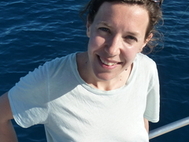
Population structure, distribution and habitat use of the Angelshark in the Canary Islands
1. Angel sharks are among the most threatened fish worldwide, facing regional and global extinction. In Europe, populations of the three Critically Endangered angel sharks (Squatina aculeata, Squatina oculata and Squatina squatina) have been severely depleted.
2. Taking advantage of the last global ‘hotspot’ of the angelshark, Squatina squatina, this study gathered data through a citizen science programme to describe the occurrence of this shark in the coastal waters of the Canary Islands. Specifically, this study described (1) the population structure, and (2) habitat use of this species, which was used in a Species Distribution Model to (3) examine realized and potential distribution patterns, and to (4) determine the relative importance of environmental predictors on the occurrence of S. squatina.
3. Over the 12 months sampling period (April 2014 – March 2015), 678 sightings were reported. Individuals ranged from 20 to 200 cm (total length). Larger sightings of both females and neonates occurred mostly in April to July, i.e. during the pupping season. Males were significantly more frequent in November to January, i.e. during the mating season. Angelsharks were encountered at depths from <1 m to a maximum of 45 m. Small‐sized individuals (i.e. neonates) exclusively occurred in shallow water (0–25 m). Most sharks occurred on sandy bottoms adjacent to reefs.
4. Even though sightings were recorded at all seven islands in the archipelago, there were fewer encounters in the western than the eastern islands.
5. The Species Distribution Model indicated that the probability of occurrence mainly correlated with sea surface temperature, chlorophyll, salinity and depth. Areas with the greatest habitat suitability were in shallow water.
6. The angelshark displayed spatial (vertical and horizontal) and temporal segregation by size and sex. This information is vital to inform conservation of this Critically Endangered shark in its last stronghold.






